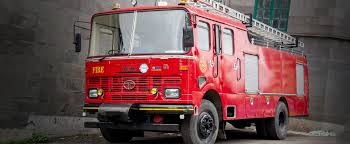Air India plane crash: 700 paramilitary personnel, six NDRF teams deployed

In a heart-wrenching aviation tragedy, an Air India flight crashed shortly after takeoff from Ahmedabad’s Sardar Vallabhbhai Patel International Airport on June 12, 2025. This devastating incident claimed more than 260 lives and triggered one of the largest emergency operations in recent memory. Authorities swiftly responded by deploying over 700 paramilitary personnel and six teams from the National Disaster Response Force (NDRF).
The Crash That Shook the Nation
Flight AI-171, a Boeing 787-8 Dreamliner, lifted off from Ahmedabad at around 1:39 PM, heading towards London Gatwick. Within just 30 seconds, the aircraft began losing altitude and crashed into the rear section of the B.J. Medical College hostel. Witnesses described the crash as a deafening explosion followed by a huge fireball and thick smoke.
Sadly, 241 passengers and crew lost their lives. Additionally, 28 people on the ground, mostly hostel residents, died instantly. Over 60 others sustained injuries, many of them in critical condition. In a rare moment of hope, one passenger, 34-year-old Vishwashkumar Ramesh, miraculously survived. Seated near an emergency exit, he managed to escape with minor injuries.
Emergency Response: Fast, Coordinated, and Massive
Soon after the crash, government agencies swung into action. The Ministry of Home Affairs, in coordination with state authorities, dispatched six NDRF teams and more than 700 personnel from various paramilitary forces. This rapid response helped prevent further loss of life and ensured the area was secured for rescue efforts.
The NDRF, trained in urban disaster management, led the initial rescue operation. Their personnel worked tirelessly through burning wreckage and collapsed structures to search for survivors. Despite the intense heat and hazardous debris, they pulled out several injured individuals and retrieved dozens of bodies.
Meanwhile, the Central Reserve Police Force (CRPF) deployed 150 personnel, including units from the Rapid Action Force. The Central Industrial Security Force (CISF), responsible for aviation security, diverted around 400 officers to manage the airport and assist in rescue coordination. The Border Security Force (BSF) also contributed 67 officers to the effort.
Challenges Faced on the Ground
The operation faced multiple hurdles. First, the hostel building partially collapsed, making access difficult. Second, fires broke out in several pockets due to aviation fuel leaks. Firefighters worked alongside NDRF teams to control the blaze. Moreover, thick smoke, toxic fumes, and the risk of secondary explosions made the operation extremely dangerous.
Despite these obstacles, rescuers remained focused. They used thermal cameras, sniffer dogs, and drones to detect heat signatures and movement under the debris. Additionally, they set up medical camps and triage centers to treat the injured on-site before transferring them to local hospitals.
Identifying the Victims
Because of the fire’s intensity, many bodies suffered severe burns, making visual identification impossible. Therefore, authorities turned to DNA analysis and dental records to identify victims. Gujarat’s Forensic Science University and the AIIMS forensic team began collecting samples from relatives at designated help centers.
The government has assured that all victims will be identified with scientific accuracy. Families of the deceased have been offered psychological counseling and logistical support, including accommodation, food, and legal assistance.
Global Response and Investigation
The crash sparked an international outpouring of grief. Prime Minister Narendra Modi called it “a national tragedy” and assured full support for the victims’ families. UK Prime Minister Keir Starmer and King Charles III also extended their condolences, as over 80 British nationals were on board.
India’s Aircraft Accident Investigation Bureau (AAIB) launched a full probe. Investigators successfully recovered the flight’s black boxes—both the Cockpit Voice Recorder and Flight Data Recorder. These devices were immediately sent for analysis. Early reports suggest a potential engine failure, but final conclusions will depend on detailed examination.
Moreover, experts from the UK’s Air Accidents Investigation Branch (AAIB) and the US National Transportation Safety Board (NTSB) are collaborating in the investigation. Boeing, the aircraft’s manufacturer, is also providing technical support.
Ensuring Justice and Support for Victims
Under the Montreal Convention, Air India is required to offer compensation to the victims’ families. The airline has already set up dedicated help desks, toll-free numbers, and mobile support teams to guide families through the legal process.
The Ministry of Civil Aviation has also ordered a thorough inspection of all Boeing 787s in the national fleet. Meanwhile, civil society groups have demanded greater accountability, more rigorous maintenance checks, and faster deployment of safety upgrades across commercial aviation.
Looking Forward
As India mourns the loss of so many lives, the focus now shifts toward accountability, healing, and reform. Authorities have promised complete transparency in the investigation and timely justice for the families of those who died.
This tragedy not only exposed the vulnerabilities in aviation but also showcased the resilience and coordination of India’s emergency systems. Thanks to the rapid deployment of the NDRF and paramilitary forces, countless lives were saved, and the disaster site was brought under control before further escalation.
Conclusion
The Air India plane crash in Ahmedabad marks a dark chapter in India’s aviation history. However, the bravery of rescue teams, the resilience of survivors, and the compassion of ordinary citizens offer a glimmer of hope amid despair. With 700 paramilitary personnel and six NDRF teams leading the rescue, India has demonstrated its ability to respond swiftly and compassionately during moments of crisis.






